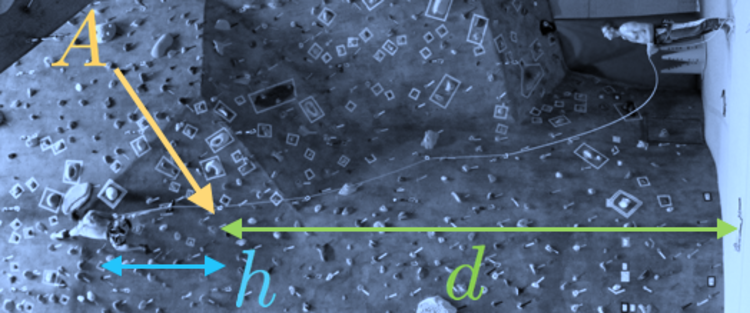Follow your lead
 One technique of rock climbing is called "lead climbing". A lead climber starts out with a rope which is held at one end by a partner. As the climber goes up the wall, their friend lets out more rope, and the climber clips the rope into metal loops that are attached to the wall. In this way, if the climber loses their grip, they will fall a distance equal to twice the length of rope between them and the last loop they clipped into (the last loop is point
in the diagram). The less of a distance the climber falls, the less force they experience on their body, and the better the chance of escaping injury.
One technique of rock climbing is called "lead climbing". A lead climber starts out with a rope which is held at one end by a partner. As the climber goes up the wall, their friend lets out more rope, and the climber clips the rope into metal loops that are attached to the wall. In this way, if the climber loses their grip, they will fall a distance equal to twice the length of rope between them and the last loop they clipped into (the last loop is point
in the diagram). The less of a distance the climber falls, the less force they experience on their body, and the better the chance of escaping injury.
Suppose a climber is m above the last clip , which is m above the ground, falls and feels an average force from the rope. How does compare to the force they feel when falling from the same distance m above their last clip when the last clip is m above the ground?
Assumptions
- Pretend the rope acts like an elastic solid with Young's modulus
- Assume your friend holds their end of the rope with infinite grip
This section requires Javascript.
You are seeing this because something didn't load right. We suggest you, (a) try
refreshing the page, (b) enabling javascript if it is disabled on your browser and,
finally, (c)
loading the
non-javascript version of this page
. We're sorry about the hassle.
I will post the better solution later but the main point is that when distance is 2 d instead of d , more rope is available for the same stretch and hence less is the force.